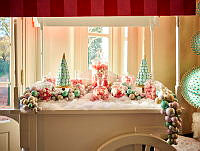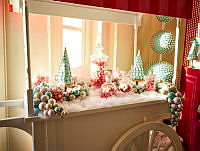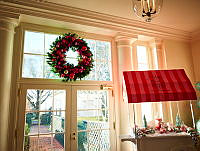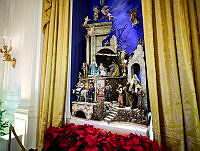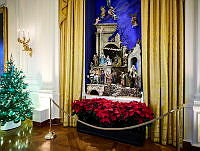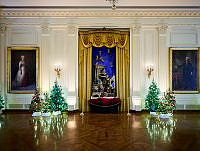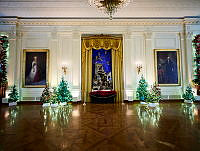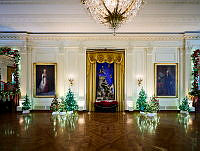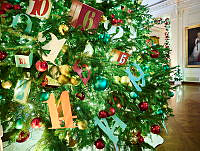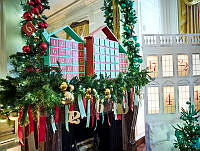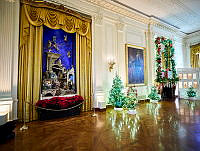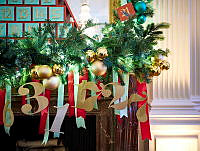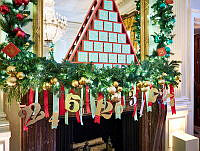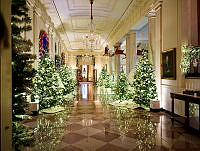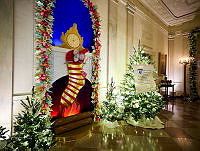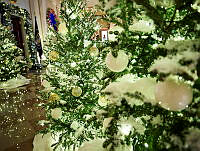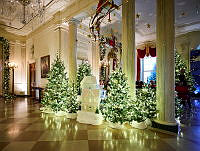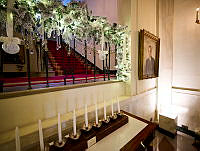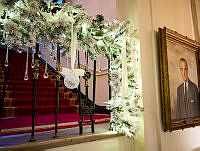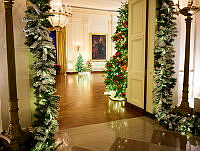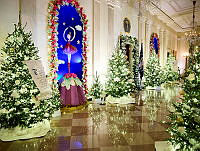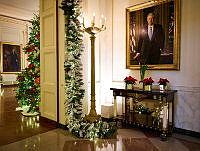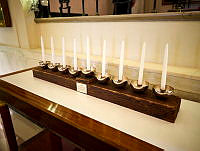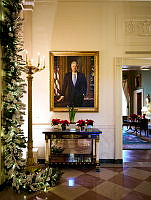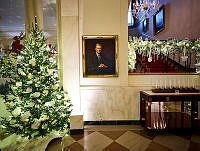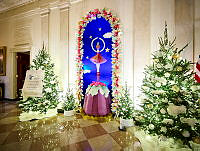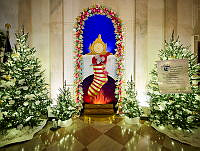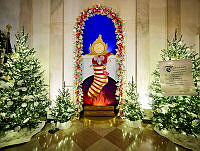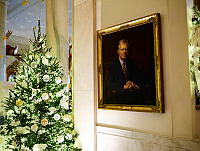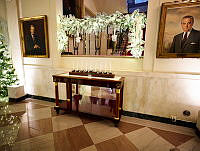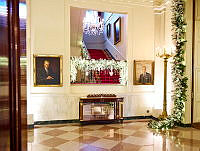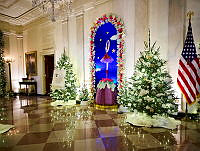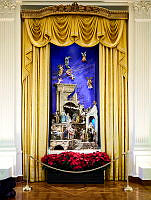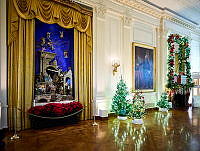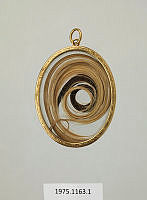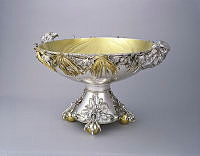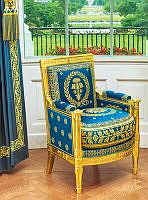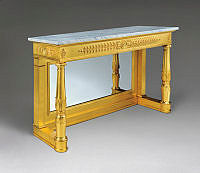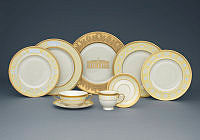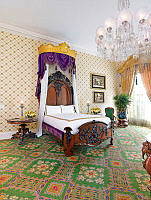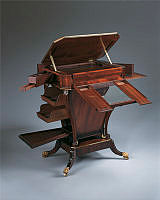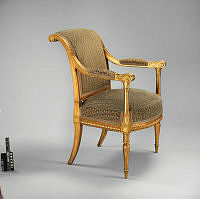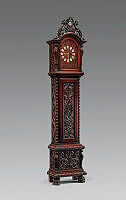An Essay on "Something Blue" by Peter Waddell
Captured by Color, 1886
Copyright © White House Historical Association. All rights reserved under international copyright conventions. No part of this article may be reproduced or utilized in any form or by any means, electronic or mechanical, including photocopying, recording, or by any information storage and retrieval system, without permission in writing from the publisher. Requests for reprint permissions should be addressed to books@whha.org

Peter Waddell, Something Blue, oil on canvas, 48 x 56.
Peter Waddell for the White House Historical AssociationThe most distinctive of the state interiors in the White House is the Blue Room. Located central in the plan, it projects toward the magnificent view of the Potomac valley. In planning a new office in 1909 President William Howard Taft elected to create an oval office, to replicate the shape and thus relate the official office to the historic White House.
Among the Blue Room's many guises in decor, perhaps the most ethereal was that created by Louis Comfort Tiffany in 1882 for President Chester A. Arthur, at the same time he built the colored glass screen in the hall immediately adjacent. Tiffany emptied the room of the old fringed and tufted decorations, and converted the historic oval space into a frosty dreamlike experience in blue, white, and silver. The artist here shows a contemplative Mrs. Grover Cleveland, at the age of 21, history's youngest first lady, who was married in the room in 1886, standing amid the Blue Room's dreamlike elegance.
The walls were a dark, absorbent blue at the wainscoting, and thinned with white and tinting to a reflective robin's egg blue toward the cornice. Overhead, snowflake and doily shapes in white and silver leaf covered the ceiling and fell to meet a storm of silver snowflakes. The room's colors form horizontal bands in shades of blue, a device carried out even in the curtains. An existing marble mantelpiece was reconfigured by the addition of glass tiles that reflected the firelight. White House antiques from the era of James Monroe are displayed on the mantelpiece. Silk canvas in two shades of blue covered the existing suite of furniture. The effect was one of being swallowed in a space in which architectural form and iridescent color unite as one.
Tiffany's decor was at the time four years old. First Lady Frances Folsom Cleveland is dressed for an evening reception. Her court train, measuring nine feet long from her shoulder, is as it will be arranged at her feet when she and the president stand in a receiving line. Faced with the facts of heavy use at the White House, Tiffany's nuances of color proved almost impossible to maintain, so practical considerations called for a less creative redecoration in 1890.











